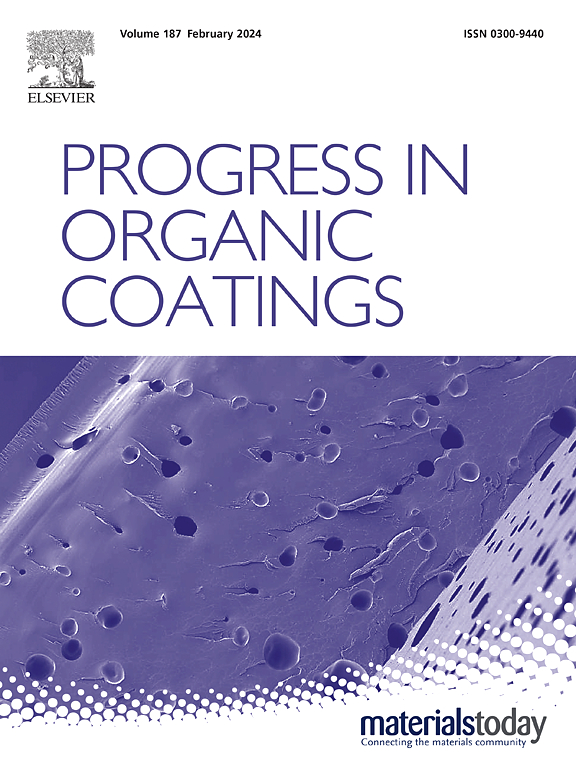Bioinspired coating with active-passive synergistic mechanism for enhanced fouling control
IF 6.5
2区 材料科学
Q1 CHEMISTRY, APPLIED
引用次数: 0
Abstract
Marine antifouling coatings are widely used to address the common problem of biofouling in marine engineering due to their cost-effectiveness and convenience. However, designing environmentally friendly and efficient coatings that can effectively tackle the formation of biofouling remains a significant challenge. This study proposes a synergistic antifouling strategy combining both active and passive mechanisms, thereby achieving efficient and eco-friendly antifouling performance. Specifically, we designed and synthesized porous ruthenium selenide nanoparticles (P-RuSe2 NPs) with dual enzyme-like activities (peroxidase and photoactivated oxidase), and combined them with a low-surface-energy coating to construct an antifouling system that integrates both active and passive synergistic functions. In this system, the low-surface-energy coating provides passive protection by reducing the initial attachment of biofouling organisms, while the P-RuSe2 NPs actively kill bacteria through their excellent enzymatic catalytic activity, further enhancing the antifouling effect. After 180 days of marine immersion, the biofouling area of the coating was reduced by 86.22 % compared to the control sample, demonstrating exceptional long-term antifouling performance. This study not only verifies the significant effect of the synergistic antifouling performance of nanozymes and low-surface-energy coatings, but also provides innovative design ideas and technological directions for the development of novel, efficient, and environmentally friendly marine antifouling coatings.
求助全文
约1分钟内获得全文
求助全文
来源期刊

Progress in Organic Coatings
工程技术-材料科学:膜
CiteScore
11.40
自引率
15.20%
发文量
577
审稿时长
48 days
期刊介绍:
The aim of this international journal is to analyse and publicise the progress and current state of knowledge in the field of organic coatings and related materials. The Editors and the Editorial Board members will solicit both review and research papers from academic and industrial scientists who are actively engaged in research and development or, in the case of review papers, have extensive experience in the subject to be reviewed. Unsolicited manuscripts will be accepted if they meet the journal''s requirements. The journal publishes papers dealing with such subjects as:
• Chemical, physical and technological properties of organic coatings and related materials
• Problems and methods of preparation, manufacture and application of these materials
• Performance, testing and analysis.
 求助内容:
求助内容: 应助结果提醒方式:
应助结果提醒方式:


